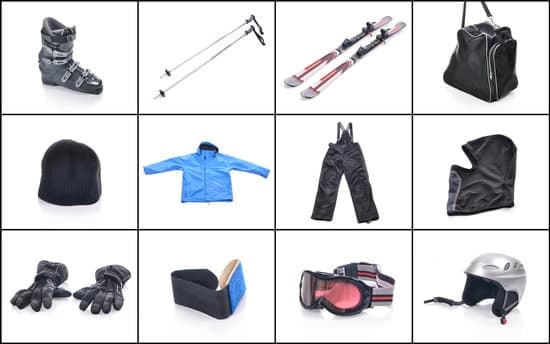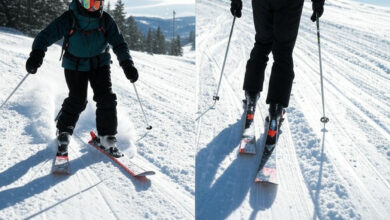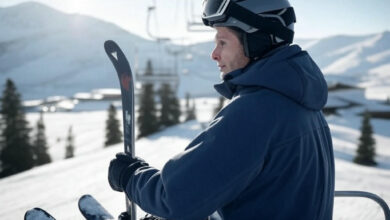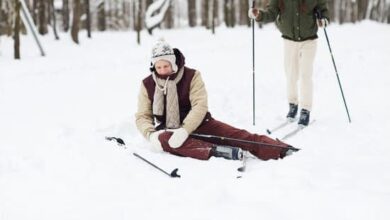How Much Do Skis Weigh? Average Equipment Weight

If you’re heading out on a ski adventure—whether it’s the powdery slopes of Colorado, the icy trails of the Northeast, or the alpine beauty of New Zealand—you’ve probably wondered: how much do skis weigh? Whether you’re packing your gear, flying with baggage limits, or just trying to figure out how heavy those skis are before loading them into your car, understanding ski weight is more important than you think.
The average recreational downhill skis (a pair with bindings) weigh between 4 to 6 kilos (8.8–13.2 pounds). That might not sound like a lot at first, but once you add ski poles, boots, jackets, and other essentials, the total weight can quickly add up. If you’re choosing gear for long-distance skiing or ski touring, lighter equipment can make all the difference in performance and stamina—especially at higher altitudes like Mammoth Mountain or the rugged terrain in Utah and Colorado.
Thanks to advances in ski technology, modern skis—including the best skis for New England and Canada—are lighter and more responsive than the older, straighter styles of the past. Materials like carbon fiber, lightweight wood cores, and advanced polymers allow manufacturers to maintain strength and flexibility while reducing overall weight. This means you can ski longer, climb easier, and enjoy better control on steep descents or variable terrain.
Whether you’re looking for the best skis for Colorado, how to choose the right skis, or want to compare snow skis in NZ, knowing the weight of skis is a key part of finding the right gear. In this article, we’ll break down ski weight by type, component, and use case—so you can confidently hit the slopes with the perfect setup for your destination.
Contents
- 1 Weights of Different Skis
- 2 Weights of Different Ski Materials
- 2.1 1. Carbon Fiber:
- 2.2 2. Fiberglass (or Fibreglass):
- 2.3 3. Wood (Core Material):
- 2.4 4. Metal (Titanal/Aluminum Alloys):
- 2.5 5. Aramid (Kevlar):
- 2.6 6. Polyurethane (PU) or ABS Sidewalls:
- 2.7 📊 Quick Comparison Table
- 2.8 🧠 Key Takeaways:
- 2.9 Benefits of a Lighter Ski
- 2.10 ⚖️ Balance is Key
- 2.11 Final Thoughts
- 3 Ski Length and Weight
- 4 How Heavy are Ski Poles?
- 5 How Much do Ski Helmets Weigh?
- 6 How much do Ski Goggles Weigh?
- 7 How Much Do Ski Goggles Weigh?
- 8 How much do Ski Gloves Weigh?
- 9 Best way to carry Ski Equipment?
- 10 🚘 1. Use a Ski Bag (Wheeled or Padded)
- 11 👢 2. Ski Boot Bags – A Must-Have
- 12 🎿 3. Carry Poles with Your Skis
- 13 🚶 4. Use a Ski Strap Carrier for Walking
- 14 ✈️ 5. Air Travel Tips for Ski Equipment
- 15 🏔️ 6. Organize Gear in a Duffel or Backpack
- 16 🧼 7. Don’t Forget Protection & Maintenance
- 17 ✅ Quick Summary: Best Ways to Carry Ski Gear
- 18 💡 Final Thoughts
- 19 Heavy vs Light Skis
- 20 Conclusion:
Weights of Different Skis
Not all skis weigh the same. The weight depends on the type of ski, materials used, length, bindings, and whether they are designed for beginners, intermediates, or pros. Below is a breakdown of the average weights of different ski types to help you compare:
1. Downhill Skis / Alpine Skis
-
Weight (per pair with bindings):
4 to 6 kg (approximately 8.8 to 13.2 lbs) -
These are the most common skis used at ski resorts. They are designed for speed, control, and turning on groomed runs. Bindings are usually fixed, which adds to the weight.
2. All-Mountain Skis
-
Weight (per pair with bindings):
3.5 to 5.5 kg (around 7.7 to 12.1 lbs) -
A versatile option for different snow conditions, from groomers to powder. Weight varies depending on stiffness and build quality.
3. Freestyle / Park Skis
-
Weight (per pair with bindings):
3.2 to 5.2 kg (approximately 7 to 11.5 lbs) -
Designed for tricks and jumps in snow parks. They are lighter and shorter for better maneuverability and reduced swing weight.
4. Powder Skis
-
Weight (per pair with bindings):
4.5 to 6.5 kg (roughly 10 to 14.3 lbs) -
Built for deep snow and off-piste skiing. They are wider and longer, so naturally, they weigh more.
5. Backcountry / Touring Skis
-
Weight (per pair without bindings):
2.8 to 4.2 kg (about 6.2 to 9.2 lbs) -
Made to be light and efficient for uphill climbs. They are paired with lighter touring bindings, which may add another 0.5–1 kg (1.1 to 2.2 lbs).
6. Cross-Country Skis
-
Weight (per pair without bindings):
1.2 to 2.2 kg (approximately 2.6 to 4.9 lbs) -
These are the lightest skis, designed for endurance and flat terrain skiing. Lightweight materials like carbon fiber are often used.
7. Junior / Kids’ Skis
-
Weight (per pair with bindings):
1.5 to 3 kg (roughly 3.3 to 6.6 lbs) -
Smaller and lighter than adult skis, made for children learning to ski. The weight depends on the size and age group.

🧠 Pro Tip: Always remember that ski boots, poles, and accessories (like helmets or backpacks) can add another 5–10 kg (11–22 lbs) to your total carry weight, especially when you’re flying or hiking.
Would you like me to follow this with a weight comparison chart or tips on how to choose lighter gear for travel or backcountry skiing?
Therefore, to get the total weight of your skis ready to hit the slopes, you need to consider the weight of the skis themselves plus the weight of the bindings.
Weights of Different Ski Materials
The materials used in ski construction significantly influence their weight, flex, stiffness, and overall performance characteristics. Here’s a breakdown of how common ski materials impact weight, along with a few other notable materials:
1. Carbon Fiber:
-
Impact on Weight: Carbon fiber is exceptionally lightweight for its strength and stiffness. Incorporating carbon fiber layers in a ski significantly reduces its overall weight compared to skis using primarily fiberglass or metal.
-
Other Characteristics:
-
Stiffness & Responsiveness: Carbon fiber adds considerable stiffness and torsional rigidity, leading to increased edge hold and responsiveness, especially on hardpack.
-
Vibration Dampening: While stiff, pure carbon can sometimes feel chattery on uneven snow. Therefore, it’s often used in conjunction with other materials to balance stiffness with dampening.
-
Cost: Carbon fiber is a premium material, so skis with significant carbon fiber integration tend to be more expensive.
-
-
Typical Use: Found in high-performance all-mountain skis, touring skis (where weight is critical), and some race skis.
2. Fiberglass (or Fibreglass):
-
Impact on Weight: Fiberglass is a relatively lightweight material, though not as light as carbon fiber. It offers a good balance of weight, strength, and cost.
-
Other Characteristics:
-
Flexibility & Smoothness: Fiberglass provides a more forgiving and smoother flex compared to carbon fiber. It helps the ski absorb vibrations and offers a more predictable feel in various snow conditions.
-
Durability: Fiberglass is relatively durable and resistant to impacts.
-
Cost: It’s a more cost-effective material than carbon fiber, making it a common choice for a wide range of skis.
-
-
Typical Use: A primary material in most recreational, all-mountain, and some freestyle skis.
3. Wood (Core Material):
-
Impact on Weight: The type and density of wood used in the core significantly affect the ski’s weight. Lighter woods like balsa or paulownia contribute to a lighter ski, while denser woods like ash or beech add weight but also increase stability and power.
-
Other Characteristics:
-
Flex & Feel: The wood core provides the foundation for the ski’s flex pattern and overall feel. Different wood types offer varying degrees of liveliness, dampness, and torsional rigidity.
-
Durability & Stability: Denser woods generally offer better durability and stability at high speeds.
-
Sustainability: Wood cores can be a more sustainable option if sourced responsibly.
-
-
Typical Use: The core material in almost all modern skis. The specific wood or blend of woods is chosen based on the ski’s intended performance. Common woods include poplar, aspen, maple, beech, ash, paulownia, and balsa.
4. Metal (Titanal/Aluminum Alloys):
-
Impact on Weight: Metal layers (often Titanal, an aluminum alloy) add noticeable weight to a ski.
-
Other Characteristics:
-
Stiffness & Stability: Metal layers dramatically increase torsional rigidity and damp vibrations, providing exceptional stability at high speeds and improved edge hold on hard snow.
-
Power Transfer: Metal enhances the transfer of energy from the skier to the edges of the ski.
-
Typical Use: Found in performance all-mountain skis, freeride skis designed for charging, and race skis where stability and power are paramount. Skis with double layers of metal will be significantly heavier than those without or with a single, thinner layer.
-

5. Aramid (Kevlar):
-
Impact on Weight: Aramid fibers are lightweight and are often used strategically in skis without adding significant bulk.
-
Other Characteristics:
-
Vibration Dampening: Aramid excels at absorbing vibrations, leading to a smoother and more controlled ride, especially in variable snow conditions.
-
Reinforcement: It can also add reinforcement and strength to specific areas of the ski without significantly increasing weight.
-
Typical Use: Found in various ski types, often integrated in the tip, tail, or along the edges to improve dampening and durability.
-
6. Polyurethane (PU) or ABS Sidewalls:
-
Impact on Weight: Sidewall materials have a moderate impact on the overall weight. PU is generally a bit lighter than ABS.
-
Other Characteristics:
-
Energy Transfer & Edge Grip: Sidewalls contribute to efficient energy transfer to the edges, enhancing grip and control.
-
Impact Resistance & Durability: They protect the ski’s core and internal layers from impacts and damage.
-
Typical Use: Standard in most modern ski constructions. The choice between PU and ABS often comes down to desired flex characteristics and durability.
-
📊 Quick Comparison Table
| Material | Weight Impact | Performance | Common Use |
|---|---|---|---|
| Carbon Fiber | Very Light | Stiff, responsive | Touring, racing, high-end skis |
| Fiberglass | Moderate | Flexible, smooth | All-mountain, recreational skis |
| Wood (Poplar) | Light | Lively, snappy | Freestyle, all-mountain |
| Wood (Ash) | Heavy | Durable, stable | Race skis, performance skis |
| Titanal | Heavy | Stable, powerful | Expert, race skis |
| Foam Core | Very Light | Soft, cheap | Beginner, rental skis |
| ABS Sidewalls | Light/Moderate | Protective, solid | Most mid-to-high-end skis |
🧠 Key Takeaways:
-
Lightweight materials like carbon fiber and paulownia wood are preferred in backcountry and touring skis.
-
Heavier materials like metal and dense hardwoods offer control and power for aggressive skiing.
-
Fiberglass strikes a great balance for most recreational skiers.
-
Choosing the right material depends on your skiing style, terrain, and performance needs.
Would you like me to include a summary or recommendations for beginners vs experts based on ski material choice?
In summary, ski weight is a carefully engineered balance achieved through the strategic selection and combination of different materials. Lighter materials like carbon fiber and lightweight wood cores are used when minimizing weight is a priority (e.g., touring), while heavier materials like metal are incorporated when stability and power are the focus (e.g., performance or race skis). Fiberglass remains a versatile and widely used material for its balance of weight, performance, and cost. Understanding the properties of these materials helps explain the differences in weight and performance across various ski categories.
Benefits of a Lighter Ski











